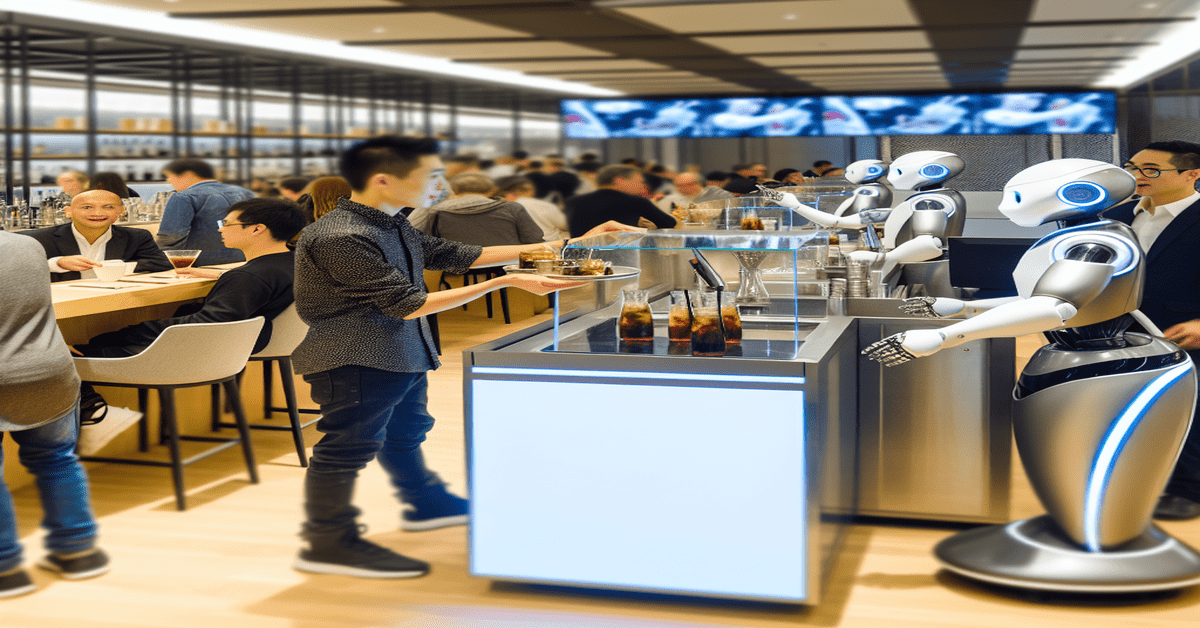The Robot Revolution: Transforming the Service Industry
In recent years, the service industry has been undergoing a major transformation, and it’s not just about new menu items or trendy decor. The real game-changer is the integration of robotics technology into restaurants, cafes, and hotels. From taking orders to serving food and even preparing meals, robots are increasingly becoming a common sight in the hospitality sector.
The Rise of Service Robots
Picture this: you walk into a restaurant, and instead of being greeted by a human server, a friendly robot rolls up to your table, ready to take your order. This scenario, once relegated to the realm of science fiction, is now a reality in many establishments worldwide. The adoption of robotic technology in the service industry is not just a novelty; it’s a trend that’s here to stay.
Restaurants and cafes are embracing robotic servers, chefs, and other automated systems to streamline operations and enhance customer experiences. These sophisticated machines are designed to navigate through crowded spaces, interact with patrons, and perform tasks with remarkable precision and efficiency.
Addressing Labor Shortages
One of the primary factors driving this robotic revolution is the persistent labor shortage plaguing the service industry. With businesses struggling to find and retain skilled workers, robots are emerging as a viable solution to bridge the gap. By delegating certain tasks to automated systems, restaurants can maintain smooth operations even in the face of staffing challenges.
Moreover, the **COVID-19 pandemic** has accelerated the adoption of robotics in the hospitality sector. With heightened concerns over health and safety, robots offer a contactless alternative for serving customers, minimizing the risk of virus transmission.
The Tech Behind the Bots
The rise of service robots wouldn’t be possible without the remarkable advancements in **artificial intelligence (AI)**, **machine learning**, and robotics engineering. These cutting-edge technologies enable robots to perform complex tasks that were once the exclusive domain of human workers.
From natural language processing that allows robots to understand and respond to customer queries to computer vision systems that enable them to navigate and identify objects, the tech behind these service bots is truly astounding. As research and development continue to push the boundaries of what’s possible, we can expect even more sophisticated and capable robots in the future.
Balancing Efficiency and Human Connection
While the benefits of robotic service staff are clear, it’s essential to consider the potential drawbacks. One concern is the loss of human interaction and emotional connection that comes with traditional service roles. After all, a friendly smile and a personal touch can go a long way in creating a memorable dining experience.
However, it’s important to note that robots are not meant to replace human workers entirely. Instead, they can complement and support human staff, allowing them to focus on tasks that require empathy, creativity, and problem-solving skills. By striking the right balance between automation and human interaction, businesses can create a service model that prioritizes both efficiency and customer satisfaction.
The Economic Impact
The integration of robots in the service industry has significant economic implications, both for businesses and workers. On one hand, robots can help restaurants and cafes save on labor costs, as they don’t require salaries, benefits, or time off. This cost savings can be passed on to customers in the form of lower prices or reinvested into the business for growth and expansion.
On the other hand, there are valid concerns about job displacement and the need for workers to adapt to the changing landscape. As robots take over certain tasks, some roles may become obsolete, leaving workers in need of new skills and training to remain employable.
However, it’s crucial to recognize that the rise of service robots also presents new opportunities. As businesses adopt robotic technology, there will be a growing demand for professionals who can design, develop, and maintain these systems. Additionally, the increased efficiency brought about by robots may lead to the creation of new roles that focus on enhancing the customer experience in ways that machines cannot.
Ethical Considerations
As with any technological advancement, the use of robots in the service industry raises important ethical questions. How do we ensure that the integration of robots doesn’t lead to widespread job losses and economic inequality? How can we protect customer privacy and data security when robots are collecting and processing personal information?
These are complex issues that require ongoing dialogue and collaboration among industry leaders, policymakers, and the public. It’s essential to develop guidelines and regulations that prioritize the well-being of both workers and customers while fostering innovation and progress.
Embracing the Future
The robot revolution in the service industry is not a distant prospect; it’s happening right now. As businesses continue to adopt robotic technology, we can expect to see even more innovative applications and use cases emerge.
Whether you’re a restaurant owner looking to streamline operations, a worker seeking to adapt to the changing job market, or a customer eager to experience the latest in dining technology, one thing is clear: the future of the service industry is here, and it’s powered by robots.
As we navigate this exciting and transformative era, it’s essential to approach the integration of robots with an open mind and a willingness to adapt. By embracing the potential of robotic technology while prioritizing human values and ethics, we can create a service industry that is both efficient and empathetic, innovative and inclusive.
So the next time you find yourself face-to-screen with a robotic server, remember that you’re not just witnessing a novelty; you’re experiencing the future of dining. And who knows? You might just find yourself saying, “**Waiter, more robots, please!**”
#ServiceRobots #RoboticRevolution #FutureOfDining #AI #Automation
-> Original article and inspiration provided by The Verge – Jess Weatherbed
-> Connect with one of our AI Strategists today at Opahl Technologies


